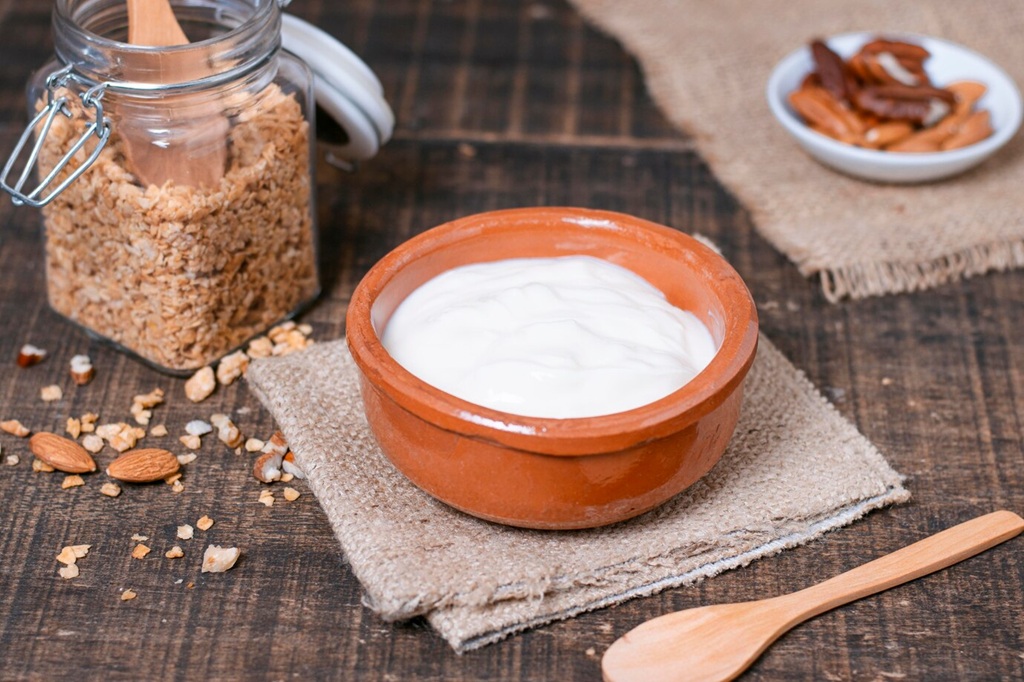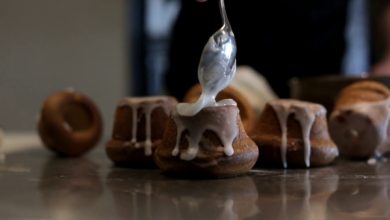Why Did My Homemade Yogurt Recipe Turn Out Grainy? 7 Common Mistakes and How to Fix Them

There’s something magical about making your own yogurt. It’s wholesome, cost-effective, and gives you total control over what goes into your food. But sometimes, things don’t go as planned. One of the most common complaints among home yogurt makers is a grainy texture. You expect smooth, creamy yogurt—and instead, you’re scooping out something curdled and rough. Frustrating, right?
This blog will explore what causes that grainy result, how you can prevent it, and what you can do to fix it. Whether you’re just starting out or have been trying to perfect your yogurt game for a while, we’ve got the solutions for you. And if you’re a fan of all things fermented and cultured, you might want to explore Tapa Society for more tips, recipes, and insights into traditional foods.
Personally, I still remember my first grainy batch. I had used fresh raw milk from a local farm, followed the instructions to the letter—or so I thought. The result? A disappointing, gritty texture that separated too easily. After a bit of research and testing, I found out where I went wrong. And now, I’m here to make sure you don’t make the same mistakes.
1. The Milk May Be Too Hot or Too Cold
Temperature matters. A lot. Yogurt-making is all about encouraging the right bacteria to grow. Too much heat, and you’ll kill them. Too little, and they won’t multiply properly.
When heating your milk before adding the culture, it should be brought up to 180°F (82°C). This process helps denature the proteins, giving yogurt that smooth texture. However, if you add your starter culture while the milk is still above 115°F (46°C), you risk killing the live cultures. If it’s below 105°F (40°C), the fermentation will be weak.
Signs Your Temperature Was Off:
- Grainy, separated yogurt
- Sour smell, but no thickness
- Runny or overly firm curds
Tip: Use a digital kitchen thermometer. It’s more accurate than guessing or going by touch.
Stat to Know: According to a study by the Journal of Dairy Science, even a 5-degree difference in fermentation temperature can significantly affect yogurt texture and bacterial activity.
Therefore, always cool the milk to between 110°F and 115°F before adding the culture. Then keep it warm (between 105°F and 112°F) throughout the 6–10 hour fermentation period.
2. Does Oui Yogurt Have Probiotics?
Yes, it does! Does Oui yogurt have probiotics is a common question among yogurt lovers. Oui by Yoplait includes live and active cultures such as Lactobacillus bulgaricus and Streptococcus thermophilus, both known for their digestive benefits.
If you’re comparing your homemade yogurt to store-bought brands like Oui, remember that texture also depends on thickening agents, milk type, and fermentation control used by commercial producers.
3. Inconsistent or Weak Starter Culture
Another major culprit behind grainy yogurt is the starter culture itself. The bacteria need to be alive and in good shape. If the culture is too old, dead, or too diluted, your yogurt won’t set properly.
Warning Signs:
- Weak tangy flavor
- Clumpy texture
- Long fermentation time but no thickening
Use These Tips:
- Always choose a yogurt labeled “live and active cultures.”
- Don’t use yogurt that’s close to or past its expiration date.
- Avoid flavored varieties as a starter—stick with plain, unsweetened ones.
How Much to Use?
Generally, 2–3 tablespoons of starter yogurt per quart of milk is enough. Too much culture can lead to over-acidification, which also contributes to a grainy or brittle texture.
Expert Insight: Research from Food Microbiology Journal shows that starter strength and balance of bacteria play a critical role in final texture consistency. Always start with fresh, active cultures for the best results.
4. Type of Milk Makes a Difference
Not all milk behaves the same. Fat content, protein levels, and how the milk was processed before you bought it all impact yogurt texture.
Which Milks Are Best?
- Whole milk gives the creamiest texture.
- Skim or 2% milk can lead to watery or grainy yogurt unless thickened.
- Ultra-pasteurized milk often doesn’t ferment well due to damaged proteins.
Personally, I found my best results came from low-heat pasteurized, non-homogenized whole milk. It allowed the good bacteria to thrive and produced a thick, spoonable consistency.
Consider Adding:
- Powdered milk (1–2 tablespoons per quart) to boost protein
- Gelatin or agar-agar (if you’re okay with using additives)
However, if you prefer pure yogurt with just milk and cultures, choose high-quality milk to start.
5. Improper Incubation Time and Method
The incubation process is delicate. It must remain steady for several hours. Big temperature fluctuations can disrupt bacterial growth and cause your yogurt to become lumpy, watery, or grainy.
Good Incubation Methods:
- Yogurt maker (most consistent)
- Oven with light on
- Insulated cooler with warm water
- Instant Pot yogurt setting
Avoid moving the yogurt or jostling the container during this time. Let it sit still and warm. Depending on how tart you like it, 6–10 hours is ideal. Longer time usually equals tangier flavor and firmer texture.
Troubleshooting Tip: If you check your yogurt early and it seems grainy, leave it for a few more hours without disturbing it. Sometimes the structure just needs more time to set.
Related: What to Make With White Eggplant? Delicious Recipes for Every Palate
6. Don’t Disturb the Yogurt While It’s Setting
This is one of the simplest yet most common mistakes. Yogurt should not be stirred or moved during fermentation. When you agitate the milk, it interferes with how the proteins align and form structure.
Even if it looks like it’s not setting, resist the urge to touch it.
What Happens If You Stir Too Soon?
- The curds can break and become grainy.
- Whey separates excessively.
- Final texture becomes unpredictable.
This mistake can be especially tempting if you’re new and worried about whether the process is working. Trust the process and let it be.
7. Storage Habits After Fermentation
Even if your yogurt sets well, how you treat it afterward affects its texture. Improper chilling or rough handling can cause the structure to break down, leading to graininess or water separation.
Best Practices:
- Cool the yogurt in the fridge for at least 4 hours before eating.
- Do not stir while it’s still warm.
- Store in clean, airtight containers.
- Use within 1–2 weeks.
Scientific Tip: According to the USDA, homemade yogurt should be stored at or below 40°F (4°C) and consumed within 14 days for optimal safety and texture.
Related: How Long to Cook Pork Loin Roast? Perfectly Succulent Results
Final Thoughts
Making yogurt at home is a rewarding journey. Grainy results are just a small bump in the road. By paying close attention to milk temperature, culture quality, and incubation practices, you can enjoy smooth, creamy yogurt every time.
If you’ve faced the gritty struggle, you’re not alone. It’s all part of learning. With these tips, you’ll not only fix your texture issues but also gain confidence in your home fermenting skills.
Got your own yogurt disaster or success story? Share it in the comments!
And don’t forget to pass this post along to your fellow foodies.
FAQs
What causes homemade yogurt to be grainy?
Grainy yogurt is usually caused by incorrect temperature, weak starter cultures, or disturbing the yogurt during fermentation.
Can I fix grainy yogurt after it sets?
Not really. Once the texture forms, it’s set. However, blending it can make it smoother, though the structure won’t be the same.
Does the type of milk affect yogurt texture?
Yes. Whole milk gives a creamier texture. Skim milk or ultra-pasteurized milk often results in a grainier, runnier yogurt.
How long should I ferment yogurt?
Ferment yogurt for 6 to 10 hours. Longer fermentation leads to thicker and tangier yogurt but should be done at a stable temperature.
Is homemade yogurt healthier than store-bought?
Yes. Homemade yogurt typically has no added sugars or preservatives and can contain more active probiotics if fermented properly.





